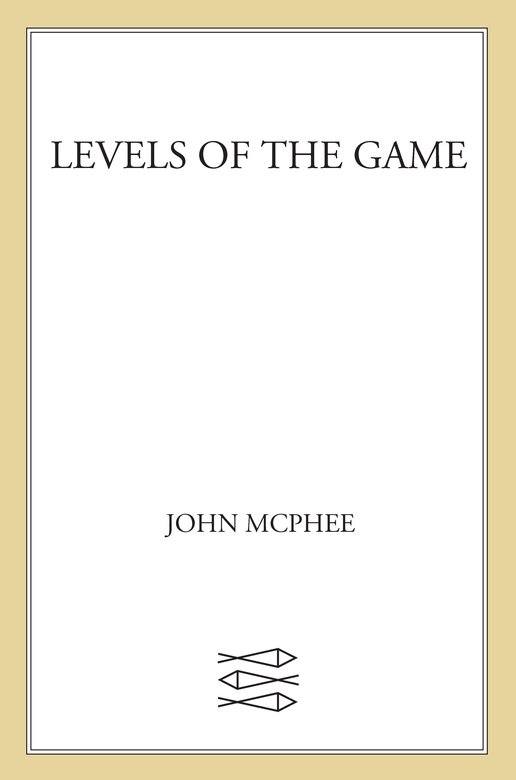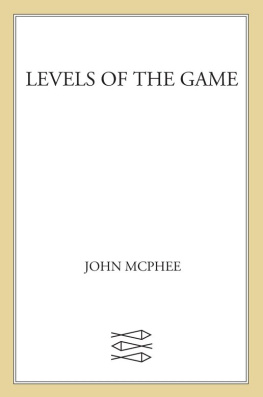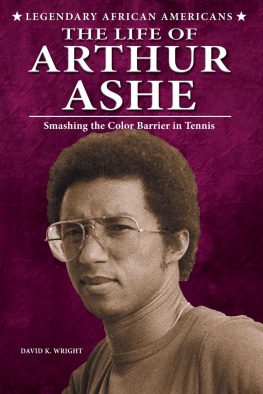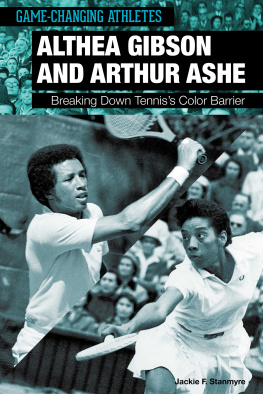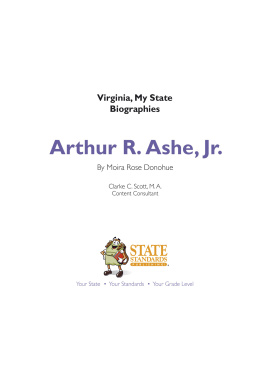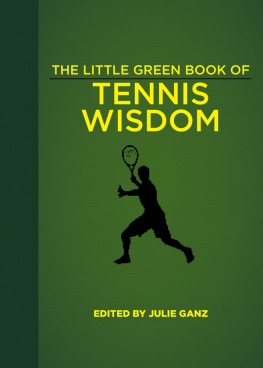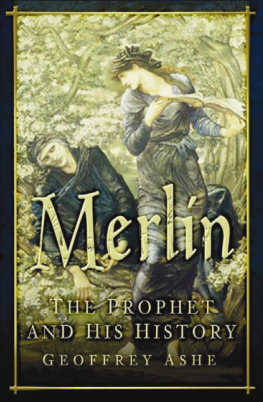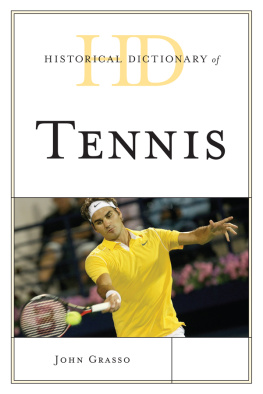Arthur Ashe, his feet apart, his knees slightly bent, lifts a tennis ball into the air. The toss is high and forward. If the ball were allowed to drop, it would, in Ashes words, make a parabola and drop to the grass three feet in front of the baseline. He has practiced tossing a tennis ball just so thousands of times. But he is going to hit this one. His feet draw together. His body straightens and tilts forward far beyond the point of balance. He is falling. The force of gravity and a muscular momentum from legs to arm compound as he whips his racquet up and over the ball. He weighs a hundred and fifty-five pounds; heis six feet tall, and right-handed. His build is barely full enough not to be describable as frail, but his co-rdination is so extraordinary that the ball comes off his racquet at furious speed. With a step forward that stops his fall, he moves to follow.
On the other side of the net, the serve hits the grass and, taking off in a fast skid, is intercepted by the backhand of Clark Graebner. Graebner has a plan for this match. He does not intend to hit out much. Even if he sees the moon, he may decide not to shoot it. He will, in his words, play the ball in the court and make Arthur play it, because Arthur blows his percentages by always trying a difficult or acute shot. Arthur sometimes tends to miss easy shots more often than he makes hard shots. The only way to get his confidence down is to get every shot into the court and let him make mistakes. Graebner, standing straight up, pulls his racquet across and then away from the ball as if he had touched something hot, and with this gesture he blocks back Ashes serve.
Ashe has crossed no mans land and is already astride the line between the service boxes, waiting to volley. Only an extraordinarily fast human being could make a move of that distance so quickly. Graebners return is a good one. It comes low over the net and descends toward Ashes backhand. Ashe will not be able to hit the ball with power from downthere. Having no choice, he hits it up, and weaklybut deepto Graebners backhand.
Graebner is mindful of his strategy: Just hit the ball in the court, Clark. Just hit the ball in the court. But Graebner happens to be as powerful as anyone who plays tennis. He is six feet two inches tall; he weighs a hundred and seventy-five pounds. The firmly structured muscles of his legs stand out in symmetrical perfection. His frame is large, but his reactions are instant and there is nothing sluggish about him. He is right-handed, and his right forearm is more than a foot in circumference. His game is built on power. His backswing is short, his strokes are compact; nonetheless, the result is explosive. There have to be exceptions to any general strategy. Surely this particular shot is a setup, a sitter, hanging there soft and helpless in the air. With a vicious backhand drive, Graebner tries to blow the ball crosscourt, past Ashe. But it goes into the net. Fifteen-love.
Graebner is nervous. He looks down at his feet sombrely. This is Forest Hills, and this is one of the semifinal matches in the first United States Open Championships. Graebner and Ashe are both Americans. The other semifinalists are a Dutchman and an Australian. It has been thirteen years since an American won the mens-singles final at Forest Hills, and this match will determine whether Ashe or Graebneris to have a chance to be the first American since Tony Trabert to win it all. Ashe and Graebner are still amateurs, and it was imagined that in this tournament, playing against professionals, they wouldnt have much of a chance. But they are here, close to the finish, playing each other. For Graebner to look across a net and see Asheand the reverseis not in itself unusual. They were both born in 1943, they have known each other since they were thirteen, and they have played tournaments and exhibitions and have practiced together in so many countries and seasons that details blur. They are members of the United States Davis Cup Team and, as such, travel together throughout the year, playing for the United Statesand also entering general tournaments less as individuals than en bloc, with the team.
A persons tennis game begins with his nature and background and comes out through his motor mechanisms into shot patterns and characteristics of play. If he is deliberate, he is a deliberate tennis player; and if he is flamboyant, his game probably is, too. A tight, close match unmarred by error and representative of each players game at its highest level will be primarily a psychological struggle, particularly when the players are so familiar with each other that there can be no technical surprises. There is nothing about Ashes game that Graebner does notknow, and Ashe says that he knows Graebners game like a favorite tune. Ashe feels that Graebner plays the way he does because he is a middle-class white conservative. Graebner feels that Ashe plays the way he does because he is black. Ashe, at this moment, is nervous. He is famous for what journalists have called his majestic cool, his towering calm, his icy elegance. But he is scared stiff, and other tennis players who know him well can see this, because it is literally true. His legs are stiff. Now, like a mechanical soldier, he walks into position to serve again. He lifts the ball, and hits it down the middle.
Ashes principal problem in tennis has been consistency. He has brilliance to squander, but steadiness has not been characteristic of him. He shows this, woodenly hitting three volleys into the net in this first game, letting Graebner almost break him, then shooting his way out of trouble with two serves hit so hard that Graebner cannot touch them. Ashe wins the first game. Graebner shrugs and tells himself, He really snuck out of that one.
Ashe and Graebner walk to the umpires chair to towel off and wipe their glasses before exchanging ends of the court. Both wear untinted, black-rimmed, shatterproof glasses, and neither uses any kind of strap to hold them on. They just stay on, Ashe willsay, shoving them with his forefinger back to the bridge of his nose. Graebners glasses have extra-long temples that curl around his ears like rams horns. The sun is really fierce. The temperature is in the eighties. Fourteen thousand people are in the stadium. Graebner is mumbling. One of Ashes winning serves came as a result of confusion among the officials, who delayed the action while discussing some recondite point, and, because of the delay, awarded Ashe, in accordance with the rules of the game, an extra first serve. Ashe, who seldom says much to Graebner during visits to the umpires chair, does use the occasion now to tell Graebner that he believes the officials decision was fair and correct. Graebner glares but says nothing. Graebners memory for lost points and adverse calls is nothing short of perfect, and months later he will still be talking about that extra serve that turned into an ace, for he cant help thinking what an advantage he might have had if he had been able to crack Ashe open in the very first game, as he almost did anyway. Ashe, for his part, believes that it is a law of sport that everything that happens affects everything that happens thereafter, and that Graebner can simply have no idea what patterns might have followed if he had won the debated point. Having so indicated, Ashe returns to the court. It is now Graebners turn to serve.
